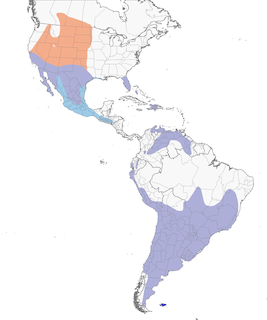Burrowing Owl Athene cunicularia Scientific name definitions
Text last updated August 31, 2011
Sign in to see your badges
Species names in all available languages
| Language | Common name |
|---|---|
| Bulgarian | Кукумявка подземник |
| Catalan | mussol de lloriguera |
| Croatian | ćuk jamar |
| Czech | sýček králičí |
| Dutch | Holenuil |
| English | Burrowing Owl |
| English (United States) | Burrowing Owl |
| Estonian | koopakakk |
| Finnish | preeriapöllö |
| French | Chevêche des terriers |
| French (Canada) | Chevêche des terriers |
| German | Kaninchenkauz |
| Haitian Creole (Haiti) | Koukou |
| Icelandic | Grafugla |
| Japanese | アナホリフクロウ |
| Norwegian | graveugle |
| Polish | pójdźka ziemna |
| Portuguese (Brazil) | coruja-buraqueira |
| Portuguese (Portugal) | Coruja-buraqueira |
| Russian | Кроличий сыч |
| Serbian | Sova jamarka |
| Slovak | kuvik zemný |
| Spanish | Mochuelo de Madriguera |
| Spanish (Argentina) | Lechucita Vizcachera |
| Spanish (Chile) | Pequén |
| Spanish (Costa Rica) | Lechuza Llanera |
| Spanish (Cuba) | Sijú de sabana |
| Spanish (Dominican Republic) | Cucú |
| Spanish (Ecuador) | Búho Terrestre |
| Spanish (Honduras) | Tecolote Sabanero |
| Spanish (Mexico) | Tecolote Llanero |
| Spanish (Panama) | Búho Terrestre |
| Spanish (Paraguay) | Lechucita vizcachera |
| Spanish (Peru) | Lechuza Terrestre |
| Spanish (Spain) | Mochuelo de madriguera |
| Spanish (Uruguay) | Lechucita de Campo |
| Spanish (Venezuela) | Mochuelo de Hoyo |
| Swedish | prärieuggla |
| Turkish | Yer Kukumavı |
| Ukrainian | Сич американський |
Athene cunicularia (Molina, 1782)
Definitions
- ATHENE
- athene
- cunicularia / cunicularius
The Key to Scientific Names
Legend Overview
Introduction
Charismatic and sometimes comical, the diminutive Burrowing Owl is an easily recognized icon of the grasslands and arid regions of western North America, Florida, and the Caribbean. Unique among North American owls, this species is active day and night, nests in underground burrows, and typically nests in small groups.
In the past half century, Burrowing Owl populations have declined sharply across much of the species' range. The species is listed as Endangered in Canada, as a species with Special Protection in Mexico, and (although it has no [legal] federal status in the USA) it is “listed” in half of the 18 western states it still occupies. Although no one major factor has been implicated in the decline of this species, the cumulative effects of human activities have undoubtedly taken a major toll.
Historically in many parts of the west and south, this species depended on colonies of burrowing mammals such as prairie dogs (Cynomys spp.) for nests sites; reduction of such colonies by agriculture has limited access to nest burrows and contributed to loss of Burrowing Owls in this region. Such colonies were sometimes large; Bent (1938) describes a Florida colony that (in the 1880s) was 3 miles (4.8 km) long and contained “several hundred” pairs of owls.
Strong local and governmental interest in this species has facilitated significant conservation efforts to maintain or revive populations, including reintroduction programs, the use of artificial nest burrows, habitat protection programs, and protective legislation.
Conservation concerns for this species served as a catalyst for three international Burrowing Owl symposia (1992, 1998, 2006), from which significant contributions have been made to our understanding of this owls' natural history. The species has been studied broadly across its range in recent decades, with key studies from Brazil, Chile, Florida, Canada and many western US states on breeding biology, movement patterns, habitat use, pesticide loads, genetics, behavior, and diet.

- Year-round
- Migration
- Breeding
- Non-Breeding
















































